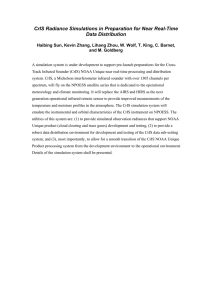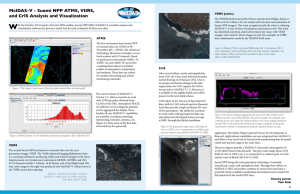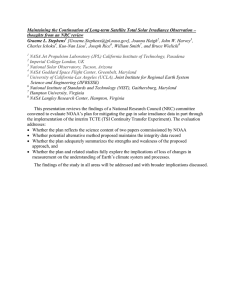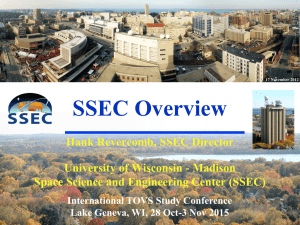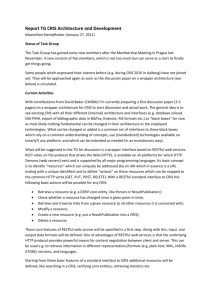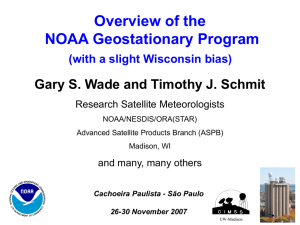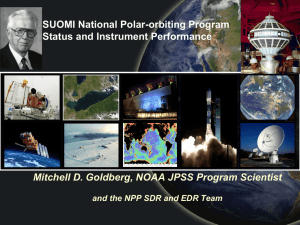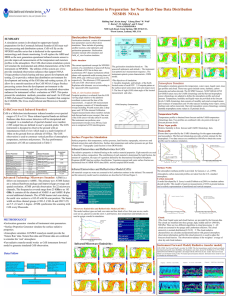The Suomi National Polar-orbiting Partnership - NASA’s Newest Earth Observing...
advertisement
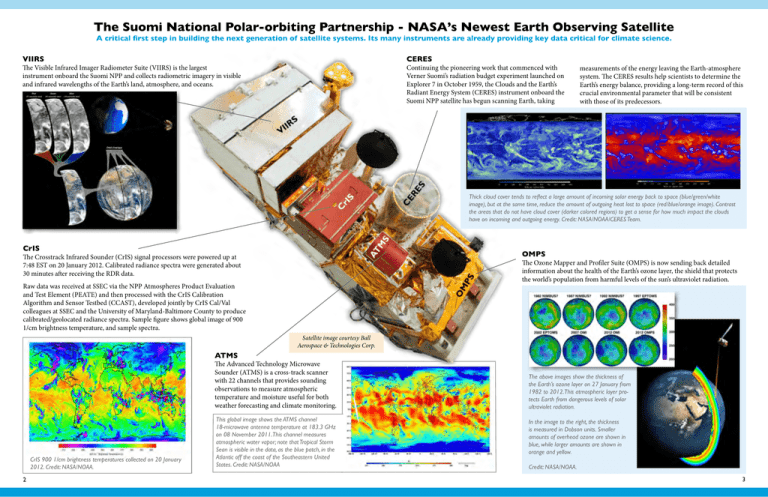
The Suomi National Polar-orbiting Partnership - NASA’s Newest Earth Observing Satellite A critical first step in building the next generation of satellite systems. Its many instruments are already providing key data critical for climate science. CERES VIIRS The Visible Infrared Imager Radiometer Suite (VIIRS) is the largest instrument onboard the Suomi NPP and collects radiometric imagery in visible and infrared wavelengths of the Earth’s land, atmosphere, and oceans. Continuing the pioneering work that commenced with Verner Suomi’s radiation budget experiment launched on Explorer 7 in October 1959, the Clouds and the Earth’s Radiant Energy System (CERES) instrument onboard the Suomi NPP satellite has begun scanning Earth, taking measurements of the energy leaving the Earth-atmosphere system. The CERES results help scientists to determine the Earth’s energy balance, providing a long-term record of this crucial environmental parameter that will be consistent with those of its predecessors. Thick cloud cover tends to reflect a large amount of incoming solar energy back to space (blue/green/white image), but at the same time, reduce the amount of outgoing heat lost to space (red/blue/orange image). Contrast the areas that do not have cloud cover (darker colored regions) to get a sense for how much impact the clouds have on incoming and outgoing energy. Credit: NASA/NOAA/CERES Team. CrIS OMPS The Crosstrack Infrared Sounder (CrIS) signal processors were powered up at 7:48 EST on 20 January 2012. Calibrated radiance spectra were generated about 30 minutes after receiving the RDR data. The Ozone Mapper and Profiler Suite (OMPS) is now sending back detailed information about the health of the Earth’s ozone layer, the shield that protects the world’s population from harmful levels of the sun’s ultraviolet radiation. Raw data was received at SSEC via the NPP Atmospheres Product Evaluation and Test Element (PEATE) and then processed with the CrIS Calibration Algorithm and Sensor Testbed (CCAST), developed jointly by CrIS Cal/Val colleagues at SSEC and the University of Maryland-Baltimore County to produce calibrated/geolocated radiance spectra. Sample figure shows global image of 900 1/cm brightness temperature, and sample spectra. Satellite image courtesy Ball Aerospace & Technologies Corp. ATMS The Advanced Technology Microwave Sounder (ATMS) is a cross-track scanner with 22 channels that provides sounding observations to measure atmospheric temperature and moisture useful for both weather forecasting and climate monitoring. CrIS 900 1/cm brightness temperatures collected on 20 January 2012. Credit: NASA/NOAA. 2 This global image shows the ATMS channel 18-microwave antenna temperature at 183.3 GHz on 08 November 2011.This channel measures atmospheric water vapor; note that Tropical Storm Sean is visible in the data, as the blue patch, in the Atlantic off the coast of the Southeastern United States. Credit: NASA/NOAA The above images show the thickness of the Earth’s ozone layer on 27 January from 1982 to 2012.This atmospheric layer protects Earth from dangerous levels of solar ultraviolet radiation. In the image to the right, the thickness is measured in Dobson units. Smaller amounts of overhead ozone are shown in blue, while larger amounts are shown in orange and yellow. Credit: NASA/NOAA. 3
